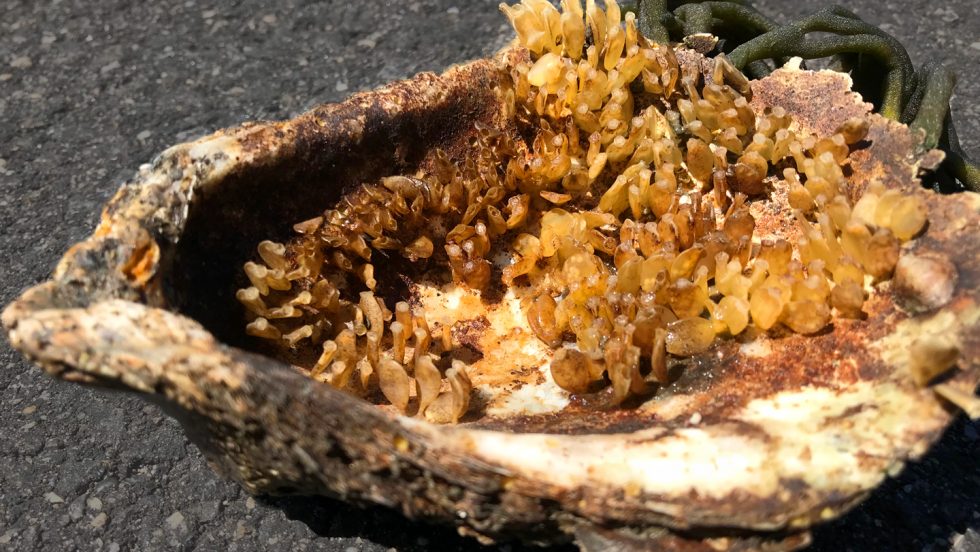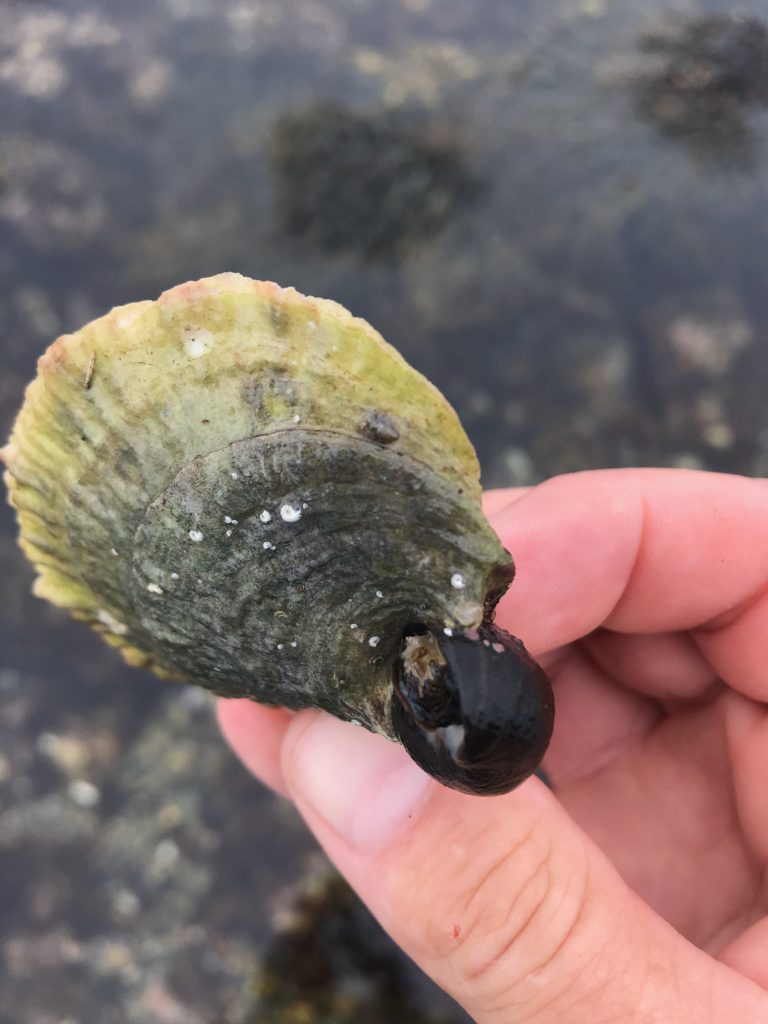
Professors receive funding to expand oyster spawning sanctuaries in Oyster Bay and Cold Spring Harbor, New York.
The Oyster Bay Oyster Festival is the Northeast’s largest waterfront festival, attracting as many as 150,000 attendees eager to enjoy fun activities—and eat local oysters. Yet, according to LI Herald.com, there are so few oysters remaining in the waters of Oyster Bay that in 2019 oysters had to be brought in from Connecticut for the festival.
Oyster populations have degraded over hundreds of years from poor water quality, overzealous harvesting of oysters and climate change, according to Aaren Freeman, PhD, professor of biology.
Dr. Freeman and visiting assistant professor of environmental studies and sciences Ryan Wallace, PhD, are working with the nonprofit Friends of the Bay to study oyster population dynamics with a $64,000 grant to monitor Oyster Bay and Cold Spring Harbor oyster spawning sanctuaries, reefs that were once harvested for oysters but where harvesting is now prohibited. The award is part of an $86,600 National Fish and Wildlife Foundation Long Island Sound Futures Fund award shared among Cornell Cooperative Extension, Friends of the Bay and Adelphi.
Mighty Mollusks
The humble oyster has played an outsized role in history—and in keeping coastal waters clean and healthy. “New York City was built on oysters and used to feed many coastal peoples,” said Dr. Freeman. “They are natural filters for coastal estuaries, filtering up to 50 gallons of water a day and removing plankton in the process. And they taste great.”
Dr. Wallace, a native Long Islander, said that he spends his summers on the water with his children, fishing and digging for clams. “Oyster Bay has a rich shellfishing history, and oyster harvests in the bay have been precipitously declining for about a decade,” he said. “I hope that my children may experience the healthy, thriving ecosystems that I’d once known as a child.”
According to Dr. Freeman, there are several reasons for the deep decline of once bountiful oyster populations in Oyster Bay and Cold Spring Harbor. Water quality declines probably play a role. And the harvest of oysters without stock enhancement through sanctuaries will inevitably lead to further oyster population declines,” he explained.
Oyster Conservation

Egg cases from oyster drills—snails that are natural predators of oysters—inside an oyster shell.
With their project, Dr. Freeman and Dr. Wallace hope to expand oyster spawning sanctuaries and mitigate the oyster population decline. “Our grant is to monitor the survival of oysters in an existing sanctuary and survey two new sanctuaries the Town of Oyster Bay will be using, and model the larval transport in the area near Oyster Bay to figure out which sites are best for different kinds of oyster conservation—whether depositing live oysters or replenishing the waters with shell material,” Dr. Freeman explained.
The current grant, he added, covers “a scientific, advisory role and hopefully will provide informed management of existing restoration efforts.”
Additionally, the team will monitor the water’s abiotic, or physical, parameters, such as temperature, salinity, dissolved oxygen and pH, as well as currents and oyster settlement. Dr. Wallace will focus on developing both hydrodynamic and habitat suitability models based on the water quality data collected from this study. “This will be the first time that this type of model will be applied to the Oyster Bay complex,” he said.
Restoring an Ecosystem
Dr. Freeman said that the professors’ overall mission of restoring a healthy ecosystem will go beyond supporting robust, self-sustaining oyster populations to benefit local oyster farmers and baymen and women as well. “I love oysters and feel they are a very sustainable source of protein, if managed correctly.”
“One goal of ours is to remove excess nitrogen from these coastal ecosystems,” explained Dr. Freeman. “Oyster farming and feeding people oysters does remove nitrogen from the estuaries.”
Contributing to the Community
As the professors see it, receiving funding to help restore degraded ecosystems is professionally—and personally—satisfying.
“This oyster grant in particular rose out of questions that local concerned citizens were asking,” Dr. Freeman said. “I’m very satisfied with this trajectory of work and being able to contribute to the local community with some locally useful and relevant science.”